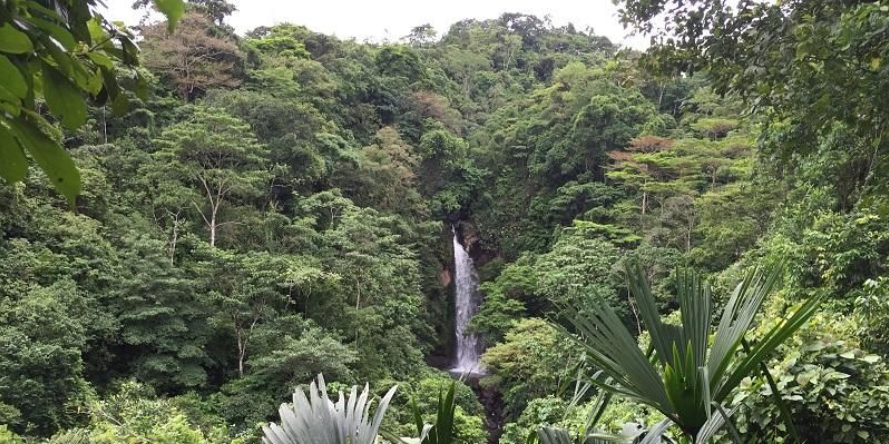Forest restoration - 'balance nitrogen-fixing trees with other species'

Reforestation projects could be made more effective with the findings of new research into the constraints on nitrogen fixation among plants.
Some trees, such as those from the Fabaceae or legume family, form a symbiotic relationship with bacteria, enabling them to them take in nitrogen from the air. For most plants, nitrogen comes from the soil but some soils, particularly those in newly reforested or disturbed tropical forests, can be low on nitrogen - and this limits tree growth.
Nitrogen is a key nutrient needed for photosynthesis. Using a process known as nitrogen fixation, some plants have adapted to take-up nitrogen from the air using the services of friendly bacteria. This enables trees to grow in habitats where nitrogen levels are low.
Higher levels of nitrogen can result in higher levels of photosynthesis and removal of carbon dioxide, a potent greenhouse gas, from the atmosphere, helping to offset some of the carbon emissions from human activity.
Nitrogen fixation also raises the nitrogen levels in the soil, encouraging non-fixing species to survive. But this apparent win-win situation has drawbacks.
An international team of scientists, led by Will Barker, a doctoral researcher from the School of Geography at Leeds, found that trees with the ability to fix nitrogen attracted insects and other animals that would eat their leaves, a process known as herbivory.
In a scientific paper published in the journal Nature, the researchers report that in a tropical forest in Panama, the nitrogen-fixing trees experienced 26% more herbivory than non-fixing trees.
They found that by being consumed, the nitrogen-fixing trees experienced lower growth and lower rates of survival when compared to non-fixing trees. This would have an impact on the amount of new nitrogen getting into the forest soils and would constrain the role that trees were able to play in taking carbon dioxide out of the environment.
Mr Barker said: “These findings give us new insights into the function of different types of trees in tropical forests and could help inform efforts to reforest tropical regions that have been degraded for logging and agriculture.
“For example, people reforesting sites may consider including a diverse mix of nitrogen-fixing and non-fixing trees so that they have enough to ensure nitrogen fixers can bring in new nitrogen, even when there will be constraints by herbivory.
“They also would not want to plant all nitrogen-fixing trees, however, because then those regenerating forests may disproportionately attract animal pests that could wipe out the nitrogen-fixing trees.”
Dr Sarah Batterman, Associate Professor in the School of Geography at Leeds, who supervised the research, said: “These findings are significant because for decades people have been interested in how abiotic factors like the availability of soil nitrogen or phosphorus or temperature constrain symbiotic nitrogen fixation.
“We’ve found that interactions with animals through herbivory on leaf tissue may be critical for determining how fertile tropical forest soils are in terms of nitrogen.
“We expect the patterns that we found in Panama will hold across a wide variety of ecosystems. We look forward to exploring that further in the future.”
The paper – Widespread herbivory cost in tropical nitrogen-fixing tree species – is published in Nature.
Other institutions taking part in the research were: Yale School of the Environment; Smithsonian Tropical Research Institute, Panama; Department of Integrative Biology, University of Texas; Cary Institute of Ecosystem Studies, New York.
Funders included the Natural Environment Research Council and the Leverhulme Trust.
Further information
For more details, please contact David Lewis in the press office at the University of Leeds: d.lewis@leeds.ac.uk
Top image credit: Dr Sarah Batterman/University of Leeds.
